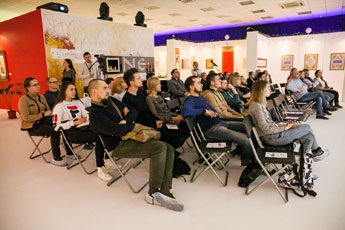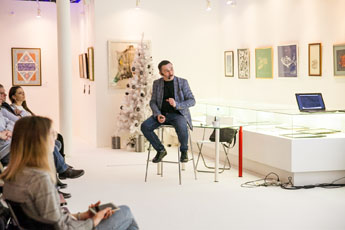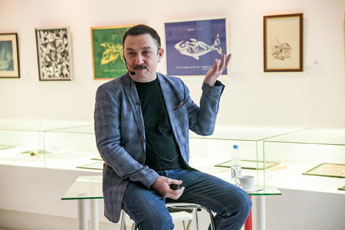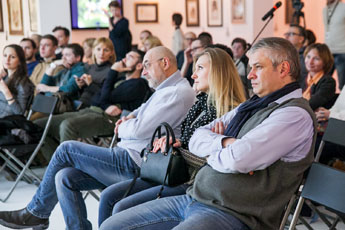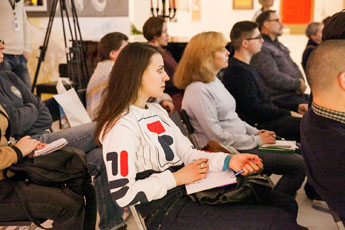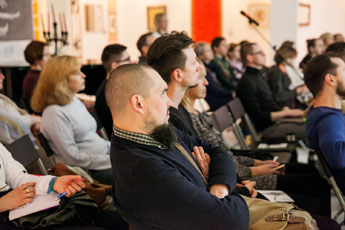Museum of Calligraphy held talk about transformation of Cyrillic
Tagir Safaev, a renowned artificial script artist, graphic designer and talented trainer, held a talk titled No Silk Way for Cyrillic in the Contemporary Museum of Calligraphy on January 23.
The designer who has 30 years of experience spoke of his professional path, impactful personalities and masterpieces he learnt from. Tagir's frankness, openness and willingness to discuss have charmed the audience as he talked about some useful features of script creation, which were of interest for both professionals and amateurs. He demonstrated his own art as well as that of his students, and displayed some examples to unlock secrets of creating a Latin based alphabet. Friendly environment facilitated a keen discussion of the reasons that impacted writing development, specifics of script contests, local and international markets.
Many guests were interested in the future of the Glagolitic and Cyrillic alphabets. Tagir shared a fascinating practice from Croatia where the Glagolitic alphabet is not only taught to children, but is also massively used, for instance, in computer keyboards. The professional repeatedly emphasized that such treatment of a national writing is a proof of excellence as each letter conceals an image that remounts to the cultural development. Calligraphy practice is a pre-requisite to preserve the national code and acknowledge spiritual heritage of the ancestors.
The artist noted that creating scripts immediately depends on calligraphy. Apart from being inspirational, this practice helps improve mental processes, enables concentration, memory improvement and enhancement of one's creative potential. Studying calligraphy masterpieces grants a devoted enjoyment of contemplating the beauty.
If you wish to know more about calligraphy, feel free to attend the Introduction to Calligraphy workshop by Artem Lebedev on January 25 in the museum.
Calligraphy — the written beauty of feelings.
